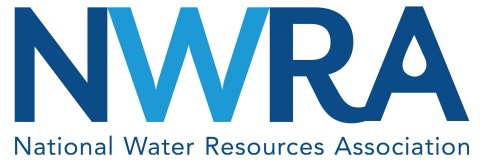WASHINGTON--(BUSINESS WIRE)--Guest editorial by Ron Thompson, President, National Water Resources Association (NWRA), General Manager, Washington County Water Conservancy District
Dec. 28, 2018
Americans expect clean, safe and affordable water. We enjoy one of the best water systems in the world, largely due to the foresight of our predecessors who invested time and money into the extensive water infrastructure. However, our country has fallen woefully short in its water infrastructure investments over the past several decades. Meeting our citizens’ expectations will cost at least $1 trillion over the next 25 years, to provide the current levels of water service. When factoring in growth, the needs increase to $1.7 trillion through 2050.
As the president of the National Water Resources Association (NWRA) and the manager of a water conservancy district in southern Utah, I know firsthand the need to invest in water has never been greater, nor have the challenges of advancing water projects been steeper.
Around 80 percent of drinking water in the U.S. comes from surface waters such as rivers and lakes, with the remaining 20 percent from groundwater aquifers. Most of that water is delivered by 1 million miles of pipes across the country laid in the early to the mid‐20th century with a life span of 75 to 100 years.
The American Society of Civil Engineers estimates that the U.S. needs to invest $123 billion per year in water infrastructure over the next 10 years just to meet projected capital needs. This doesn’t include the costs for adding capacity in high-growth regions like in the West, responding to natural disasters, or developing new sources of water. Local, state and federal governments are only spending $41 billion annually on water infrastructure, representing about one-third of the estimated need.
Assuming all levels of government could close this investment gap, our national economy would gain $220 billion annually, and add 1.3 million direct and indirect jobs. These jobs are well paying with wages above the national average. Nationally a one-day disruption of water service would result in an aggregate loss of over $43 billion per day, and more than $22 billion in gross domestic product. Recognizing the needs and risks, Congress passed, and President Trump signed into law Oct. 23, 2018, legislation that provides for the conservation and development of water and related resources and authorizes the Army Corps of Engineers to construct various projects for improvements to rivers and harbors. The bill also authorizes key drinking water and wastewater infrastructure under the Safe Drinking Water Act and the Clean Water Act that are administered by the Environmental Protection Agency. It also addresses specific water supply and storage programs of the Bureau of Reclamation.
I speak for water managers throughout the country by thanking members of Congress and the president for supporting this legislation. But as Vice President Mike Pence said at the bill’s signing ceremony, the bill is just a down payment on rebuilding America’s infrastructure.
The U.S. invested heavily in the complex system for storage and delivery of water in the West to encourage settlement of arid regions and to serve its growing communities. The ambitious campaign transformed the region, attracting tens of millions of new residents and encouraging a major growth-oriented economy. In subsequent decades, federal funding for water resources infrastructure has dropped dramatically, placing the burden on state and local authorities to maintain these systems for the greater good.
But water resource stability is threatened in the West because existing developable resources are insufficient to meet anticipated water demand. The western states contain the headwaters of the continent’s major river system including the Columbia, Missouri/Mississippi, Rio Grande and Colorado rivers. All these states are actively developing new water resources to support their economic activity. California is planning several major water projects in the Sacramento-San Joaquin River Delta. The Northern Integrated Supply Project for 15 northern Colorado communities is in the permitting phase and the Southern Nevada Pipeline is on the drawing board. The U.S. Bureau of Reclamation is studying the feasibility of raising dams and building new water pipelines throughout the West including the Navajo-Gallup Water Supply project in New Mexico.
In my home state, the Utah Legislature passed the Lake Powell Pipeline Development Act in 2006 to secure the future of Southern Utah by making sure current and future generations have a diverse and reliable water source. The Lake Powell Pipeline will bring a critical second source of water to southern Utah to meet the needs of our growing communities, reduce our risks from drought and climate change, and keep the economy strong. The water conservancy districts in Washington and Kane counties, the project’s recipients, collectively deliver water to 13 communities.
Streamlined permitting will help advance critical water projects including the Lake Powell Pipeline, which has been in planning for more than 20 years. Extensive studies, preliminary design and permit applications have already cost millions.
More efficient federal permitting will ensure water projects are done responsibly, yet significantly reduce the aggregate time and cost required to get the project approved and built.
While the investment deficits are significant, the benefits of closing the gap are even greater. When it comes to investing in and building the infrastructure for clean water, we can no longer kick the can down the road. We all must invest in the water system we need to sustain our quality of life, health and economy.
Ron Thompson
President, National Water Resources Association
General
Manager, Washington County Water Conservancy District
Ron Thompson is the President of the National Water Resources Association (NWRA). The NWRA is a nonpartisan, nonprofit federation of state water resources associations, agricultural and municipal water providers, and water professionals dedicated to the promotion of the development, conservation, and beneficial use of the water resources of the United States. NWRA members provide water to more than 50 million people, providing a critical resource to families, farms, communities and industries.
For media inquiries please contact Ian Lyle at 202-360-6429 or ilyle@nwra.org.




